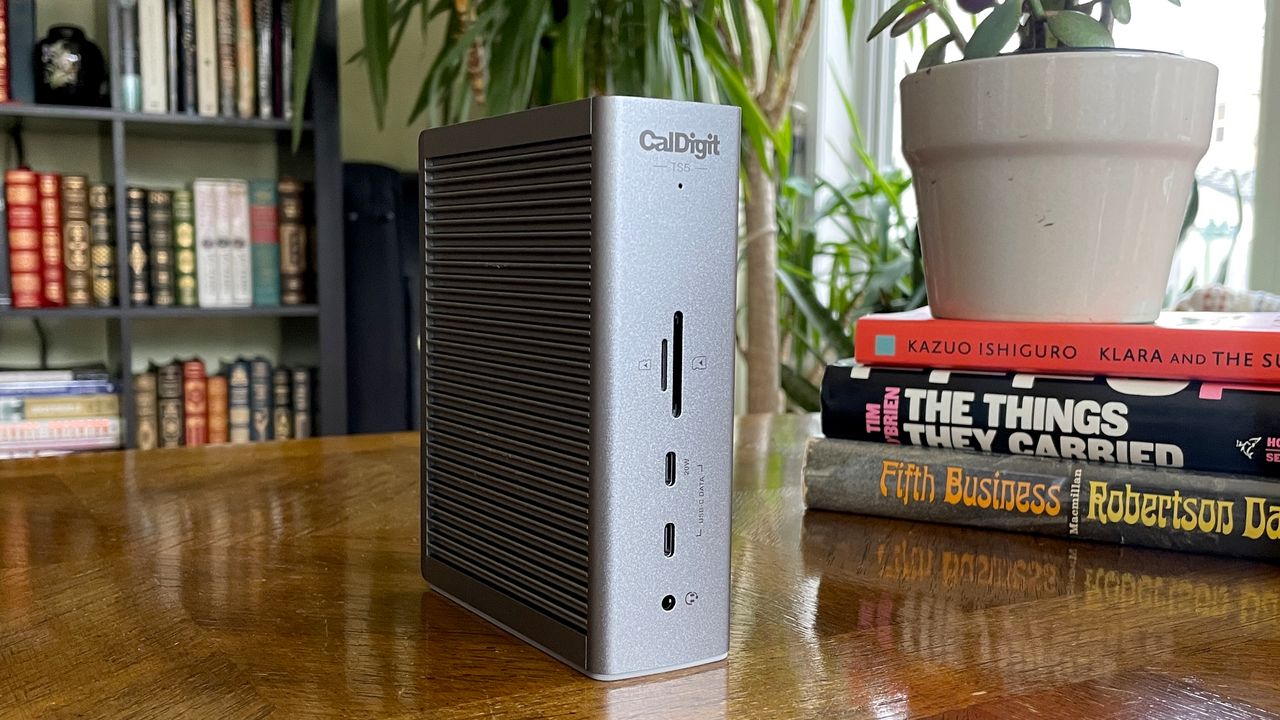
CalDigit recently released two high-end Thunderbolt 5 docking stations for laptops, and I got a chance to test the TS5 Plus model soon after it became available.
In my review, I called this the top Thunderbolt 5 dock for demanding Windows users, but pointed out that its $500 cost and advanced features are more than what most people need.
The CalDigit TS5 is a powerful dock, though it has fewer ports and slightly less functionality compared to the TS5 Plus model. I’ve been testing it for several weeks to see what it does well and whether it’s a good choice for you, especially when compared to other docks on the market.
We received a review unit from CalDigit for this review. However, CalDigit didn’t have any influence on the content and hadn’t seen it before it was published.
How does CalDigit’s TS5 compare to the TS5 Plus?
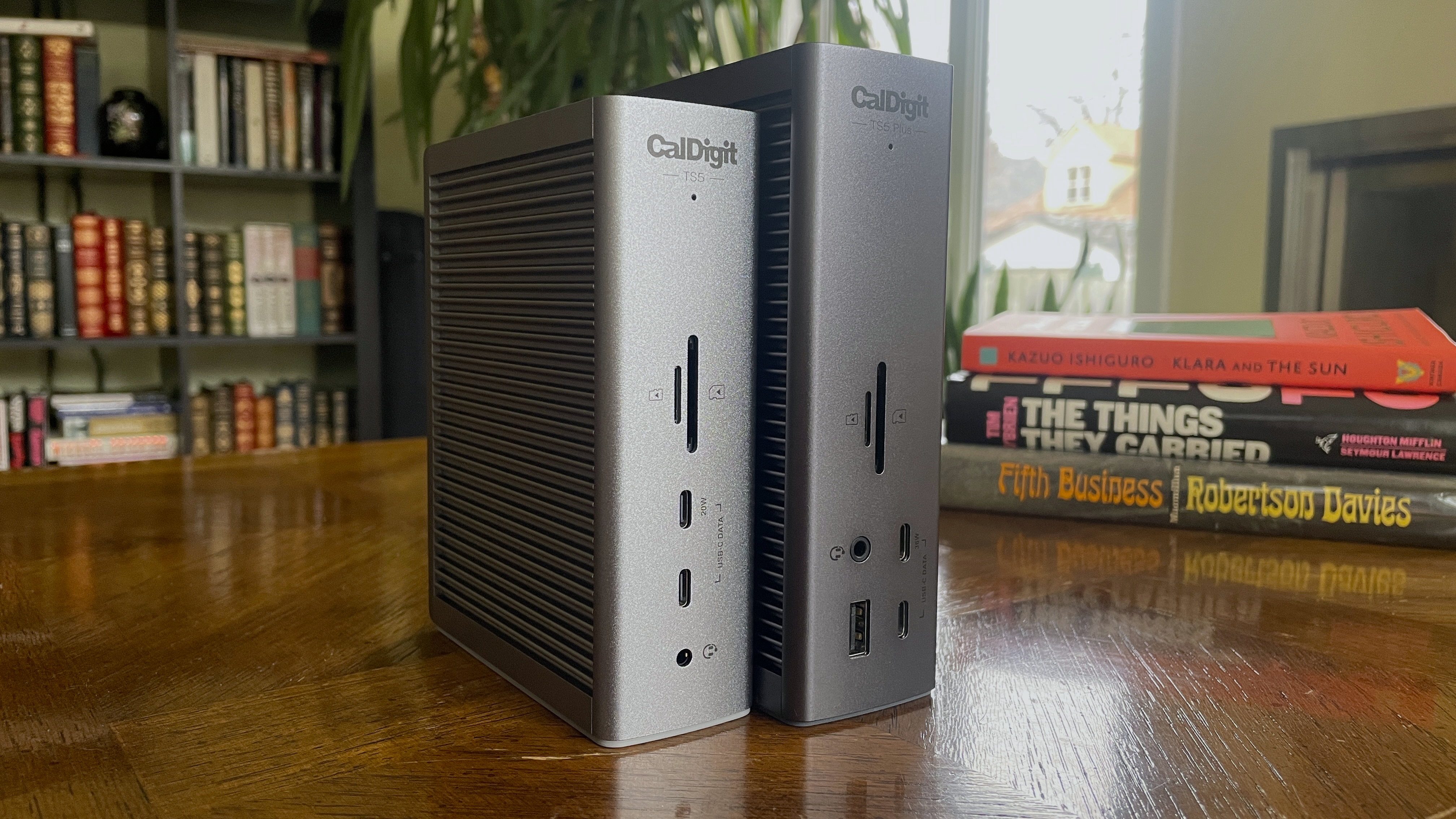
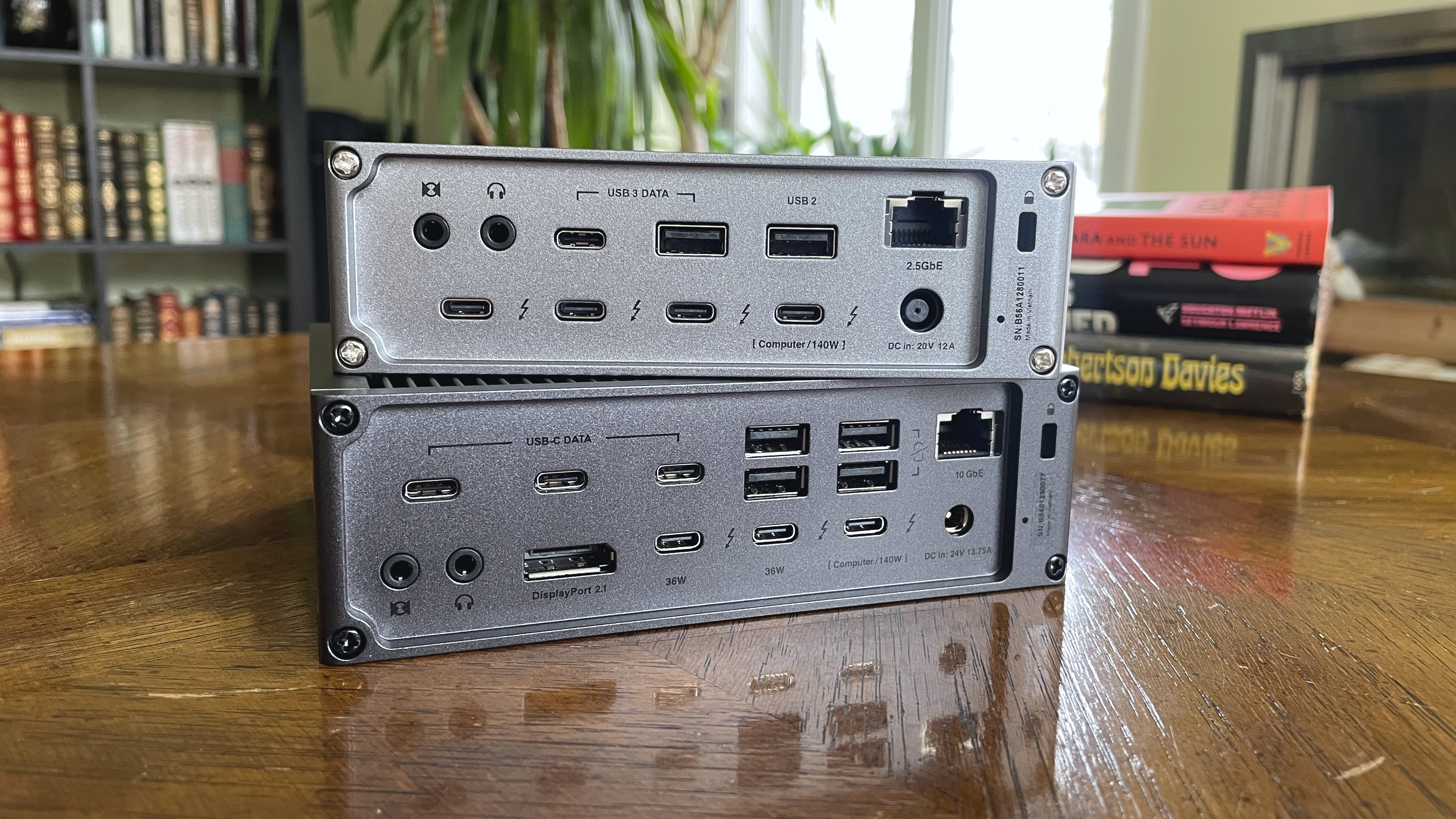
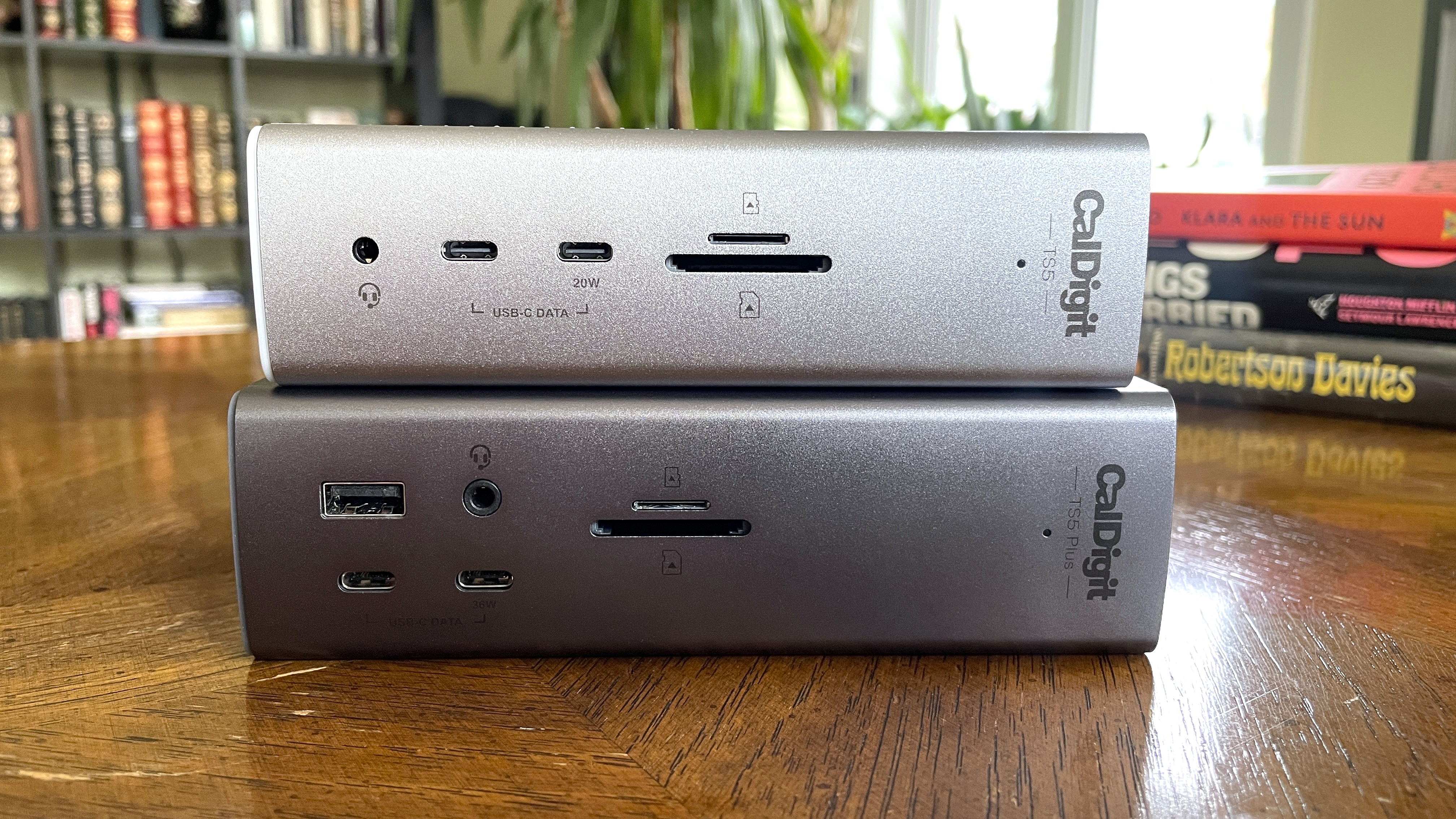
The CalDigit TS5 and TS5 Plus have a similar look, featuring aluminum panels with ridges to help keep them cool. They also include a non-slip base for using them upright and rubber grips for when they’re lying flat, plus plenty of ports on both the front and back.
This design has proven itself over the years, and it continues to work well – there’s no need to reinvent the wheel. It’s known for being reliable, adaptable, and staying cool. The TS5 is more compact than the TS5 Plus and offers fewer connections – 15 in total, including the TB5 host link – compared to the TS5 Plus’s 20 ports.
Here’s a closer look at the raw specs that go into each of these CalDigit docks.
| CalDigit TS5 | CalDigit TS5 Plus | |
|---|---|---|
| Host connection | Thunderbolt 5 (120Gbps) | Thunderbolt 5 (120Gbps) |
| Front ports | USB-C 3.2 (Gen 2, 20W); USB-C 3.2 (Gen 2, 7.5W); 3.5mm audio combo; UHS-II microSD/SD card readers | USB-A 3.2 (Gen 2, 7.5W); USB-C 3.2 (Gen 2, 36W); USB-C 3.2 (Gen 2, 7.5W); 3.5mm audio combo; UHS-II microSD/SD card readers |
| Rear ports | USB-C 3.2 (Gen 2, 7.5W); USB-A 3.2 (Gen 2, 7.5W); USB-A 2.0 (7.5W); 2.5Gb Ethernet; 3.5mm audio in/out; 3x Thunderbolt 5 (USB4v2, 15W, 80Gb/s); Thunderbolt 5 (host, 140W) | 3x USB-C 3.2 (Gen 2, 7.5W); 4x USB-A 3.2 (Gen 2, 7.5W); 10Gb Ethernet; 3.5mm audio in/out; DisplayPort 2.1; 2x Thunderbolt 5 (USB4v2, 36W, 80Gb/s); Thunderbolt 5 (host, 140W) |
| Power | Up to 140W host charging, 240W AC adapter | Up to 140W host charging, 330W AC adapter |
| Max display res. | Dual 8K@60Hz, Triple 4K@144Hz | Dual 8K@60Hz, Triple 4K@144Hz |
| Dimensions | 5.55 (H) x 4.46 (L) x 1.65 (W) inches | 6.10 (H) x 5.03 (L) x 1.85 (W) inches |
| Material | Aluminum chassis | Aluminum chassis |
| Warranty | 2 years | 2 years |
| Compatibility | Thunderbolt 5, Thunderbolt 4, USB4/USB4v2, USB-C; Windows 11, macOS 15 or newer; Not compatible with Thunderbolt 3 Windows PCs | Thunderbolt 5, Thunderbolt 4, USB4/USB4v2; Windows 11, macOS 15 or newer; Not compatible with Thunderbolt 3 Windows PCs |
| Price | $399.95 | $499.99 |
The front of the TS5 dock features two USB-C ports instead of the traditional USB-A. Both USB-C ports support fast data transfer speeds up to 10Gb/s, with one providing 7.5W of power and the other delivering 20W. Like the TS5 Plus, it also includes SD and microSD UHS-II card readers, as well as a 3.5mm headphone jack.
Unlike some newer models, the TS5 doesn’t have DisplayPort 2.1 and includes two fewer USB-C ports. It features one USB-C 3.2 port (Gen 2) with 7.5W power delivery, one USB-A 3.2 (Gen 2) port also at 7.5W, and a standard USB-A 2.0 port with 7.5W. It does offer three Thunderbolt 5 ports for connecting devices, plus one Thunderbolt 5 port to connect to a host computer – one more downstream port than the TS5 Plus.
When using a standard TS5, the Ethernet connection speed is limited to 2.5 Gigabits per second, while the TS5 Plus supports speeds up to 10 Gigabits per second.
This design has proven itself over time, and there’s no need to update it. It’s long-lasting, adaptable, and runs cool.
CalDigit has created a smaller, more budget-friendly docking station based on their TS5 Plus, still geared towards professional users. While it no longer supports native DisplayPort, it adds an extra Thunderbolt 5 port with DP2.1. The Ethernet connection is a bit slower, offering 2.5Gb speeds, but that’s plenty fast for most people.
While this model has fewer USB ports than the TS5 Plus – it lacks three USB-A and two USB-C ports – most people probably won’t notice the difference. I find the three USB-C and two USB-A ports on the regular TS5 to be sufficient.
Both models of the dock can charge laptops with up to 140W of power, even though the TS5 comes with a slightly smaller 240W power adapter. CalDigit says the standard TS5 works with Windows PCs that have USB-C ports, but this compatibility isn’t offered for the TS5 Plus.
The TS5’s display support is just as good despite a lack of native DisplayPort

Even though the standard TS5 doesn’t directly support DisplayPort 2.1, it still offers excellent external monitor capabilities. Using Thunderbolt 5, Windows PCs can power up to three 4K displays simultaneously, each running at a smooth 144Hz, thanks to DP2.1 support through the Thunderbolt ports.
You can connect two 8K monitors running at 60Hz each, but you’ll need a computer with Thunderbolt 5. If you use Thunderbolt 4, you’ll be limited to two 6K monitors at 60Hz, and won’t be able to connect three monitors at all.
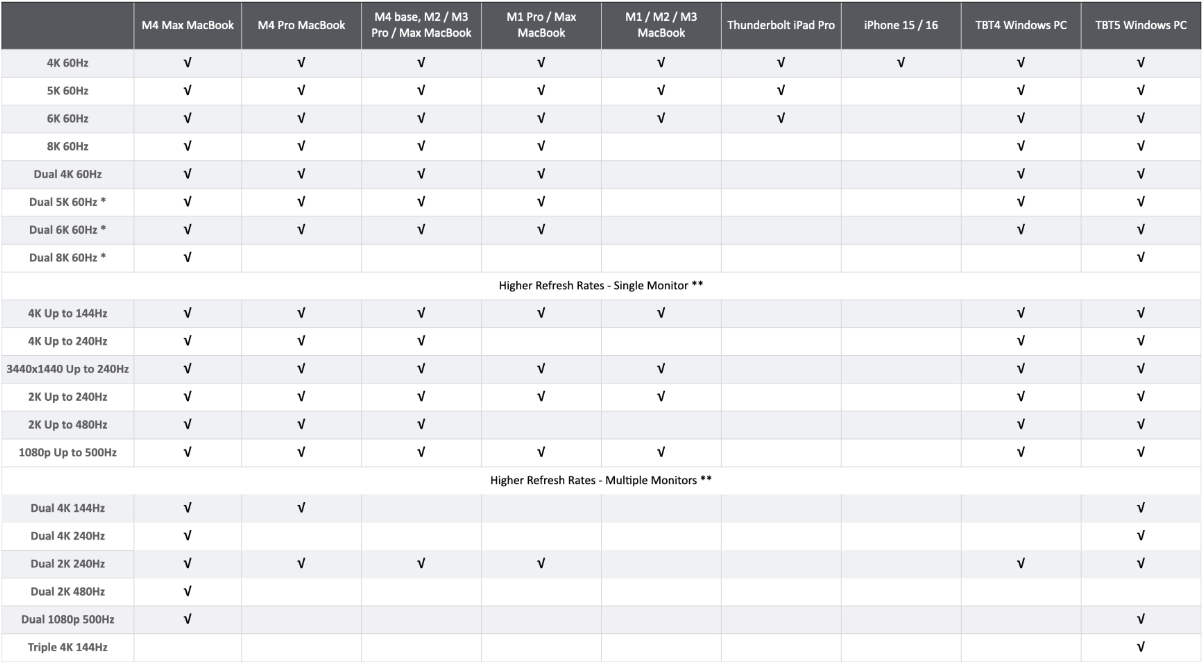
Some docking stations provide better display capabilities. For example, the Plugable TBT-UDT3 Thunderbolt 5 dock, which I’ve been testing, has fewer ports than the TS5, but it can support two 8K monitors running at a smooth 120Hz each.
Again, that’s overkill for the vast majority of users, but it is an option.
Can you live without Thunderbolt Share and a built-in SSD slot?
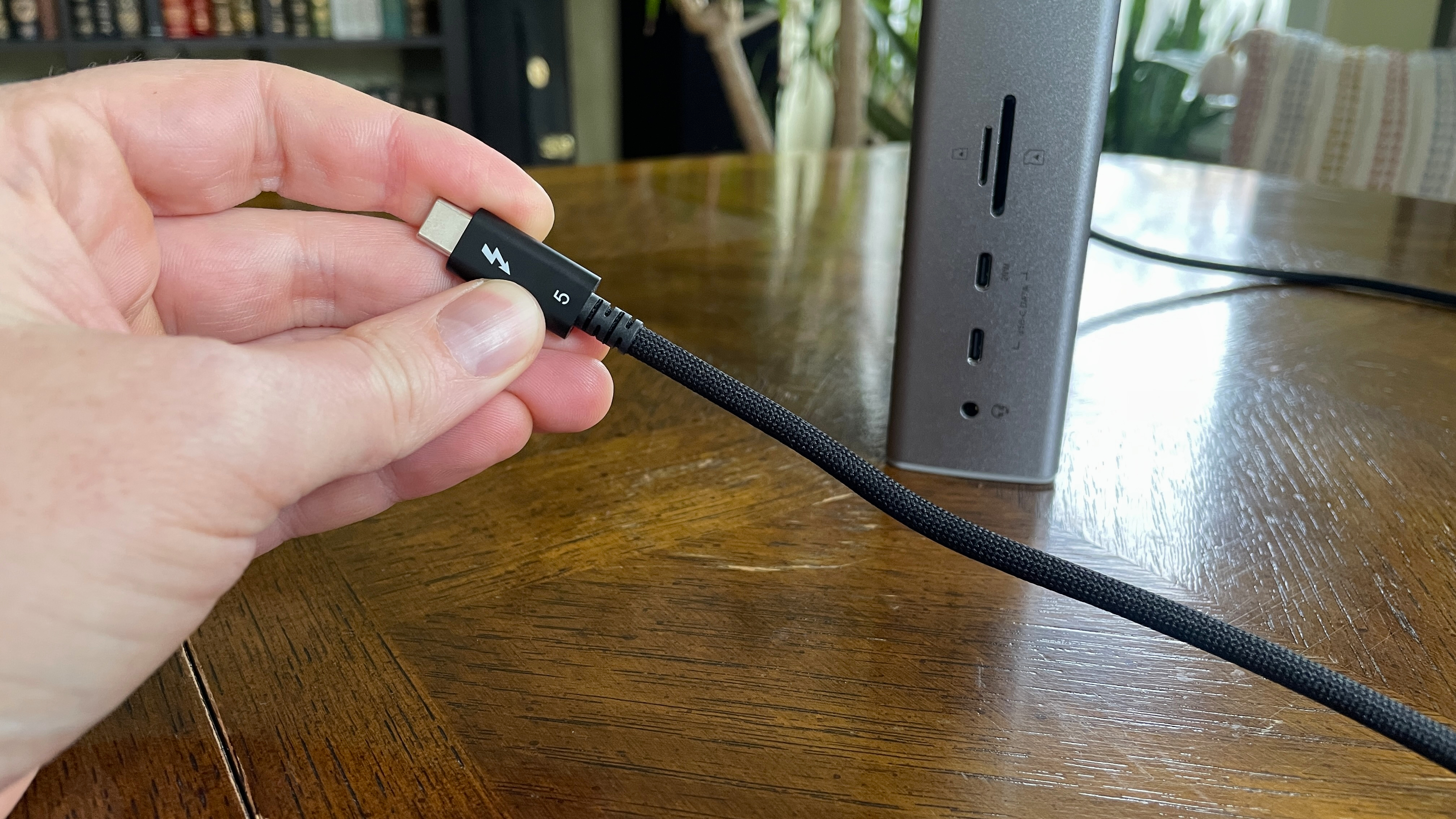
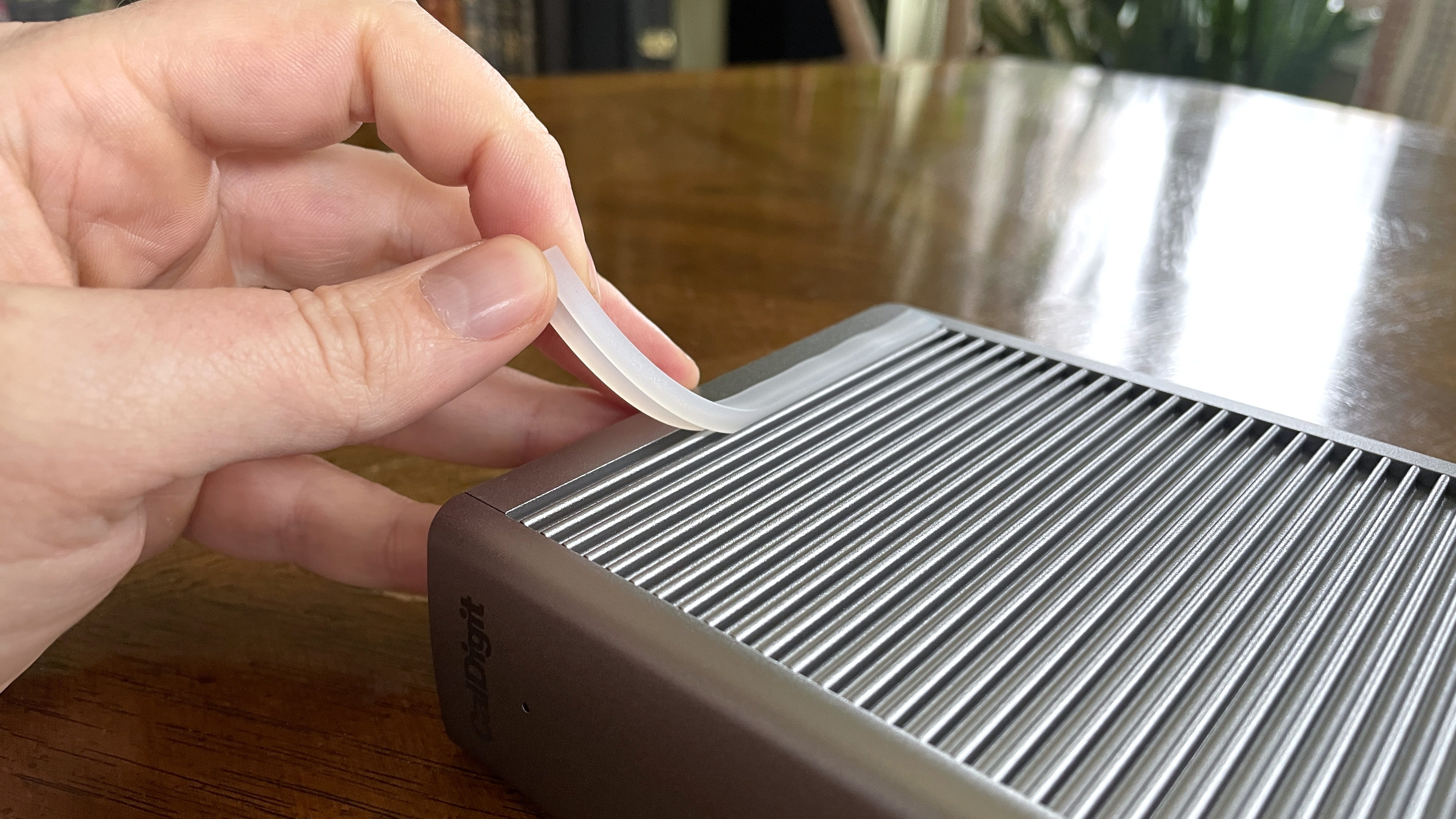
I’ve been really impressed with a new feature showing up in the latest Thunderbolt 5 docks, like the Razer Thunderbolt 5 Dock Chroma and the Kensington SD7100T5 EQ Pro.
I’m referring to a built-in M.2 slot that supports the latest, super-fast PCIe 4.0 NVMe SSDs. Having a quick drive like that is a huge benefit, particularly for someone who frequently switches between computers.
This feature wasn’t included in the CalDigit TS5 or TS5 Plus docks. However, these docks do offer fast data transfers – up to 64Gb/s – when using external storage through Thunderbolt.
CalDigit’s 2025 products won’t include a feature called Thunderbolt Share. This Intel technology lets you easily transfer files between two laptops, keep files synchronized, move all the data from one computer to another, and even control a connected computer.
To use this feature, at least one computer needs a Thunderbolt Share license. Alternatively, you can purchase a docking station that already includes Thunderbolt Share, which eliminates the need for separate licenses on each computer. The Razer Dock Chroma and the Plugable TBT-UDT3 are two examples of docks with this built-in functionality.
This is a pretty specific request, but it would be great if CalDigit included it in their high-end products.
CalDigit TS5 review: My final thoughts

✅You should buy this if …
- You need a dock with the most downstream Thunderbolt 5 ports possible.
- You have a PC with Thunderbolt 5 or Thunderbolt 4.
- You need a dock that can support up to three external displays.
❌You should not buy this if …
- You need a dock with Thunderbolt Share baked in.
- You need a dock with a built-in M.2 SSD slot.
- You need a native video out port.

CalDigit offers two high-end docking station options, giving customers more choices. For my needs, the TS5 model works perfectly, and I think most people will find it meets their requirements as well.
This dock is $100 less expensive than the TS5 Plus, plus it’s smaller. It does lose native DisplayPort support, but gains an additional downstream TB5 connection. I used it for daily tasks and everything worked perfectly – I didn’t experience any performance problems.
I was a little disappointed to see that the new CalDigit docks don’t have Thunderbolt Share, and neither of them include an M.2 SSD slot – that slot is something I really like for adding extra, fast storage. But honestly, I get that not every dock *needs* to have one!
If you’re looking for a dock with those capabilities, I suggest the Razer Thunderbolt 5 Dock Chroma, which costs around $400. The Kensington SD7100T5 EQ Pro is another good option at about $450, and it includes a slot for an M.2 SSD, though it doesn’t have Thunderbolt Share. It’s a solid alternative to the Razer model, costing roughly the same.
Read More
- The Most Jaw-Dropping Pop Culture Moments of 2025 Revealed
- Ashes of Creation Rogue Guide for Beginners
- 3 PS Plus Extra, Premium Games for December 2025 Leaked Early
- Where Winds Meet: How To Defeat Shadow Puppeteer (Boss Guide)
- Best Controller Settings for ARC Raiders
- Where Winds Meet: Best Weapon Combinations
- TikToker Madeleine White Marries Andrew Fedyk: See Her Wedding Dress
- Jim Ward, Voice of Ratchet & Clank’s Captain Qwark, Has Passed Away
- Kylie Jenner Makes Acting Debut in Charli XCX’s The Moment Trailer
- Superman’s Breakout Star Is Part of Another Major Superhero Franchise
2025-11-19 15:42